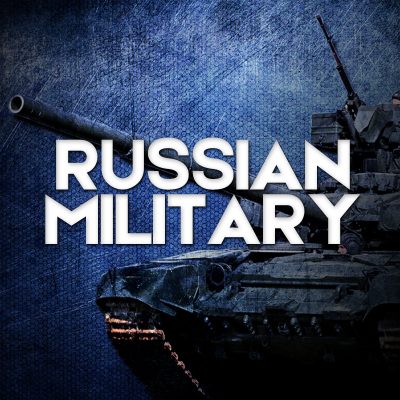DEAR FRIENDS. IF YOU LIKE THIS TYPE OF CONTENT, SUPPORT SOUTHFRONT WORK:
PayPal: southfront@internet.ru
Donation alerts: https://donationalerts.com/r/southfront
Gumroad: https://gumroad.com/southfront
Or via: http://southfront.org/donate/ or via: https://www.patreon.com/southfront,
BTC: 3Gbs4rjcVUtQd8p3CiFUCxPLZwRqurezRZ,
BCH ABC: qpf2cphc5dkuclkqur7lhj2yuqq9pk3hmukle77vhq,
ETH: 0x9f4cda013e354b8fc285bf4b9a60460cee7f7ea9
Written and produced by SF Team: J.Hawk, Daniel Deiss, Edwin Watson
On May 24, 2016, the Russian Ministry of Defense announced a request for proposals to implement the modernization of nine Su-25 Grach (Raven) attack aircraft to the Su-25SM3 model at a cost not to exceed 3.3 billion rubles. The initial contract for 9 is likely to be followed by several additional contracts, as the Russian Aerospace Forces want to have at least 40 Su-25SM3 aircraft in service by 2020, out of the total fleet of 180 single-seat Su-25 and Su-25SM aircraft.
The decision to continue the upgrades to the Su-25 indicate this attack aircraft has earned itself a permanent spot in the Russian inventory, with no replacement even being proposed. And there is no real need for a replacement, as the basic Su-25 airframe is well suited for the types of missions the plane was originally designed to perform.
Su-25’s history dates back to the 1970s when a need for a dedicated battlefield fire support aircraft was identified by the Soviet Air Forces. Existing attack aircraft such as the Su-17 were better at attacking targets in the immediate enemy rear area. Given the threat posed by NATO medium-range air defenses and fighters, these aircraft relied chiefly on speed for protection. They were less suitable for operations directly over the front lines where they would be exposed to small arms fire and short-range air defense weapons. That type of environment required an aircraft similar to the original Shturmoviks of the Great Patriotic War, the Il-2 and Il-10 attack aircraft which relied less on speed and more on armor protection for survival.
While counterinsurgency was not one of the missions for which the Su-25 was being designed, the 1980s war in Afghanistan against non-state actors which the West at the time labeled “freedom-fighters” rather than “terrorists”, and whom the West armed with advanced anti-aircraft weapons such as the Stinger missile, the Grach proved to be the most effective fixed-wing aircraft in that kind of environment. Its long wings endowed it with the ability to carry large weapon loads and with high loiter times which were essential when providing top cover against ambushes to Soviet troop columns. A comparatively slow Su-25 already in the air was going to be on the scene far more quickly than the faster Su-17 awaiting the call on its airbase. Its high level of protection meant that the twin-engined Grach could return to base even after one of its engines was knocked out by a heat-seeking Stinger. That effectiveness was only to be confirmed against a very similar type of enemy in Chechnya and, most recently, in Syria, where the Su-25s have represented a high proportion of the Russian air group.
The decision to move forward with the Su-25SM3 modernization indicates not only that the Grach has proved itself in the skies of Syria, but also that the need for a well protected battlefield support aircraft is not going away, as the mission cannot be very well performed by other combat aircraft or even by drones. The newest Su-25 variant will incorporate GLONASS and GPS navigation systems and the SVP-24-25 Gefest ordnance aiming system that allows unguided munitions to be used with accuracy approaching that of guided weapons.
Russian media reports have noted that the Su-25SM3 upgrade is also intended to improve its ability to destroy enemy main battle tanks, which is only a reasonable priority in view of the recent NATO hostility toward Russia. It has not been reported how the anti-tank capability is to be provided, as none of the wide range of weapons carried by the Su-25 are dedicated anti-tank systems. It may be that the Su-25SM3 will utilize the experience of the Su-25T and Su-39 programs which attempted to incorporate the 9K121M Vikhr-M supersonic, laser-guided, anti-tank missiles with a range of up to 10km. The missile system, which incorporates an automatic target tracker to enable the launch aircraft to undertake post-launch evasive maneuvers, entered production in late 2015 in order to arm Ka-52 Alligator attack helicopters. If so, the Su-25SM3 upgrade would provide the Russian Aerospace Forces with a sizable force of dedicated tank-busters ready to reprise the anti-tank Shturmovik role of the Great Patriotic War.





June 8th, 2016 Netanyahu invites Russia to develop Israel’s gas fields
Tuesday, Russian President Vladimir Putin met with Israeli Prime Minister Benjamin Netanyahu in Moscow. They discussed economic cooperation including energy ties.
https://www.rt.com/business/345829-putin-netanyahu-israel-russia/
The Su-25s were pulled from Syria, as the West and Gulf dictatorships kept arming the jihadists with MANPADS. Will the Su-25 be retrofitted with new countermeasures similar to the one on helicopters?